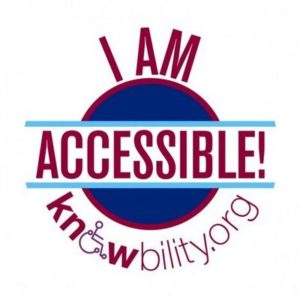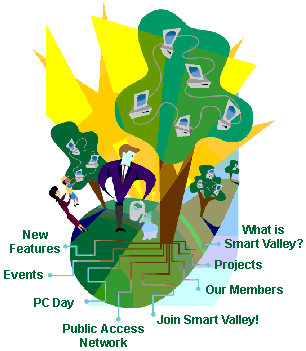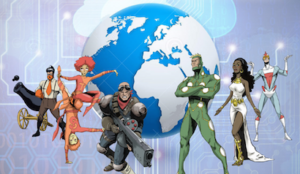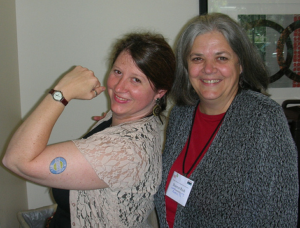 We have a saying in English: Stay in your lane. It means “mind your own business” or “keep moving straight ahead and don’t veer over into other people’s affairs.”
We have a saying in English: Stay in your lane. It means “mind your own business” or “keep moving straight ahead and don’t veer over into other people’s affairs.”
Unfortunately, in the workplace, it’s a mentality frequently used to pass the buck and avoid activities we should be doing, to avoid thinking about things that, for whatever reason, we don’t want to. It’s a strategy to avoid mainstreaming.
This kind of thing happens to me a lot: in a meeting with a group or initiative, we start talking about marketing, public relations, etc., and I bring up that we need to consider that outreach will need to done to target a specific group among our stakeholders because our traditional outreach might not reach members of that group. And someone will say, “Oh, no, so-and-so is in charge of outreach to that group. We don’t need to talk about it.”
For instance, say I’m in a community advisory group regarding a public library, and when the library staff says to our group that they want advice from us regarding community outreach about a new story hour, I ask, “What do you think could be done to reach out to Spanish-speaking residents specifically and make sure they feel welcomed?”, and the response is, “Oh, the city has a diversity specialist and she handles all that. You don’t need to consider it. It’s her job.” Really? I shouldn’t, just as a human being, have a commitment to making sure everyone is welcomed at the public library? I shouldn’t have a commitment to being inclusive? It’s just one person’s job to do that? You are going to cede all discussion and action for outreach to a specialized population to just one person, rather than relying on that person for consultation and guidance as we consider ALL of our actions? You are going to let the community advisory group off the hook in considering minority populations in it outreach entirely?
The job of specialized committees or specialized roles isn’t to be responsible for absolutely all outreach or engagement of particular groups – women, Spanish-speaking residents, people with disabilities, etc. Certainly they will direct specialized outreach or engagement activities, but they are also meant to support ALL staff, regardless of their job titles, in taking those particular groups into consideration in their work. It’s called MAINSTREAMING – where staff get guidance for making considerations about a particular issue, but still feel empowered to take action.
Back in March 2009, I wrote a blog on a now-defunct platform where I noted that I am not a gender specialist, however, that I mainstream consideration of women and girls’ needs into my international and local community work:
if you say in a report, “the majority of the community expressed support for this project,” I’ll ask in my edits how many of the “majority” were women and how their feedback was gathered. If you draft a proposal for a public event or project, I’ll ask how women and girls will be targeted and accommodated to participate in it (as appropriate; maybe it’s specifically focused on men, and that’s okay, provided justification for such is detailed). If you say in your evaluation report that the community technology center is always full with young people using the computers and attending the workshops, I’ll ask what percentage of users were girls. I look for the gender breakdown for any references to community, participants, students, patients, attendees and leaders in reports, and if I don’t see it, I ask for it. I also let community field workers know that they have to systematically collect relevant data/information regarding women’s participation just as they collect overall information…
You shouldn’t have to be a gender specialist to mainstream women’s issues in your aid and development work. Why is the gender specialist the only staff person who goes to gender-related meetings outside the organization, for instance? Why is the gender specialist the only staff member who is asked to write a report about how women’s issues are being addresses by a project — as an annex to the main report written by someone else? To truly mainstream gender, shouldn’t a project manager who is not a gender specialist be at gender-focused trainings every now and again? Shouldn’t every staff member in a development organization have to show how he or she addresses the concerns of women and girls in their work, and if not, say explicitly why not? Shouldn’t every staff member be held accountable for what they do — or don’t do — to address the needs of women and girls in their aid and development work?
Let’s use another example: on any project I’m on, as a paid employee, consultant or unpaid volunteer, if anything comes up regarding a website, I am going to ask these questions: “Has the website been/will the website be designed so that it is accessible to people with disabilities or people using assistive technologies? If it hasn’t been, shouldn’t we have a commitment to doing that?”
There is rarely anything in my job description about advocating for people with disabilities. I have no written mandate to advocate for this issue. But I do, every time. Because I have mainstreamed web site accessiblity into my life. I don’t wait for a web accessibility expert to bring it up – I bring it up. I’m not a web accessibility expert any more than I’m a Latino outreach expert, yet, I bring these issues up, because I have a commitment to inclusiveness. And I will happily consult with the official disability rights advocate on staff in advocating for these issues – but I am going to advocate for these issues, regardless.
What drives people to want to pass off consideration of communications or engagement that will target particular audiences to one specialist, or one entirely separate committee, to do all of the work him, her or themselves? Perhaps someone thinks, “I don’t want to step on any toes.” Perhaps they are scared of the issue, afraid they will say or do something that isn’t welcoming to that minority group or to women. Perhaps they really don’t understand cross-cutting issues or cross-cutting considerations – I met someone today who has worked in community relations for decades and had never heard the term cross-cutting issue.
Of course, this kind of “we shouldn’t talk about this at all – leave it to the specialist” approach can also be driven by a silo mentality of an outreach specialist or particular committee that does want to collaborate with other individuals in the same organization – they don’t want to empower, they want to control.
Let me be blunt: the gender specialist shouldn’t be the only one promoting women’s inclusion in an initiative or project. The diversity specialist shouldn’t be the only one promoting inclusion of Latino members in a city’s activities. A commitment to inclusiveness shouldn’t be one made only by one staff member or committee. Everyone making a commitment to inclusiveness – mainstreaming – doesn’t mean taking anything away from a specialist or a committee with a designated role regarding specialized outreach. It also doesn’t mean you have to become an expert. A comment from someone who wants to be inclusive, who wants to mainstream, can be as simple as this:
Hey, we’ve got this proposal in front of our committee about where to locate the new public pool. How will the city be informing our Spanish-speaking population about the possibilities and get their input?
That doesn’t mean your committee suddenly becomes experts in Latino affairs. Rather, it means you are bringing up an issue that needs to be addressed by someone.
Another example: a nonprofit wants to create a community technology center in a poor community, to give people experiencing extreme poverty access to critical information and communications they need online or via a phone. Any staff member should feel empowered, even encouraged, to say, “We need to make sure women feel welcomed and safe here. What resources can we access to make that happen?” Again, that staff member is probably not a gender specialist, but he or she has made a commitment to make sure gender issues are considered and addressed by someone.
 I really love this and I would love to see this guide built into all hackathons / hacks4good, the development of apps4good, etc.:
I really love this and I would love to see this guide built into all hackathons / hacks4good, the development of apps4good, etc.:
 Knowbility’s
Knowbility’s





